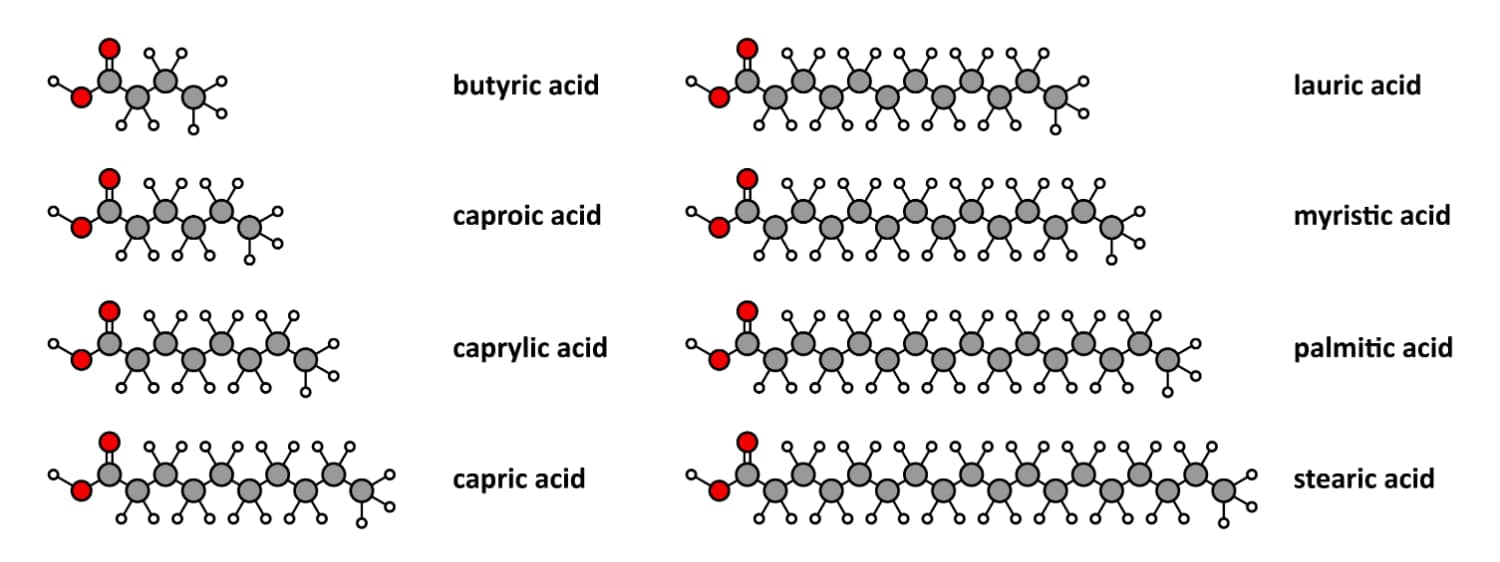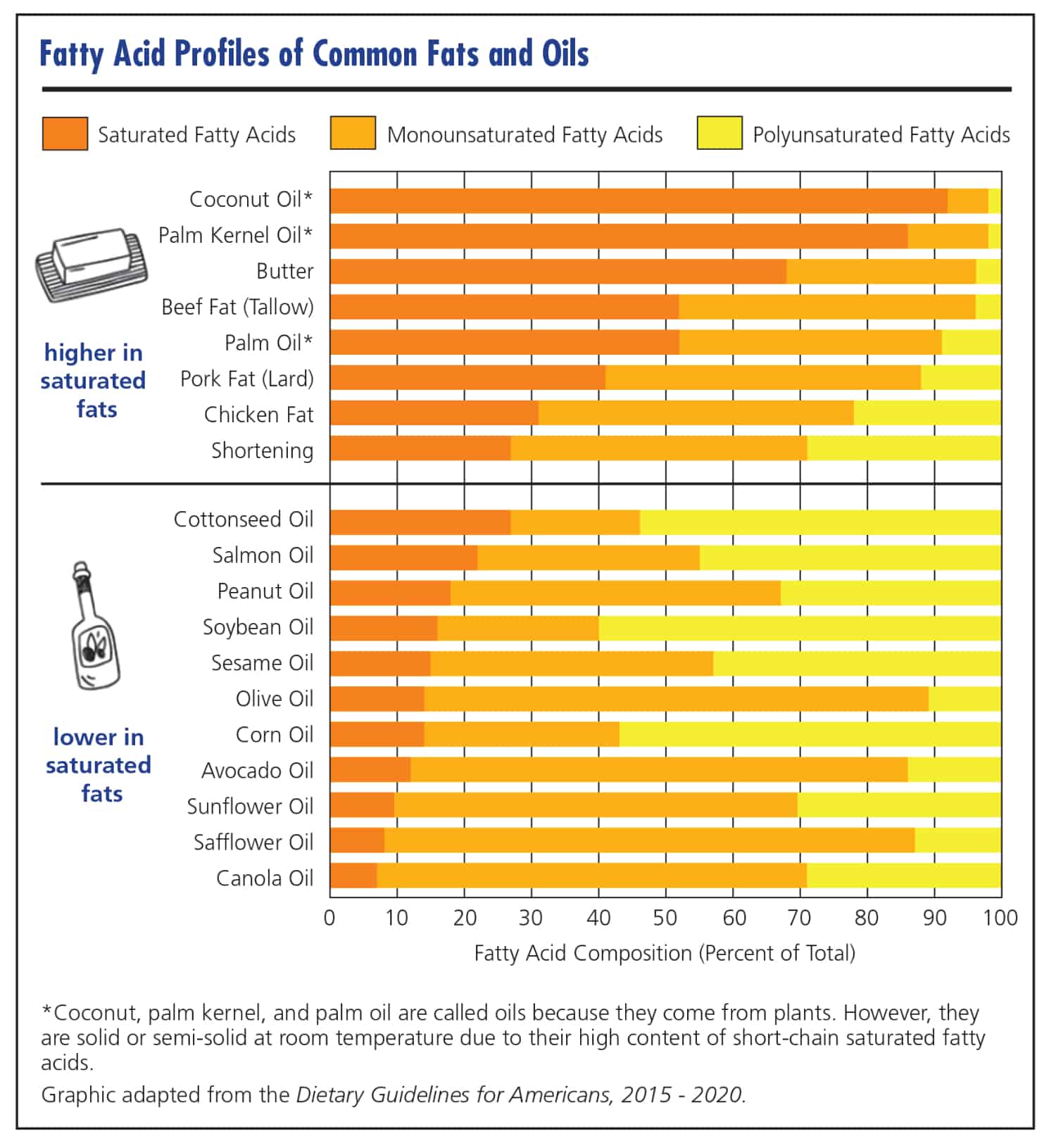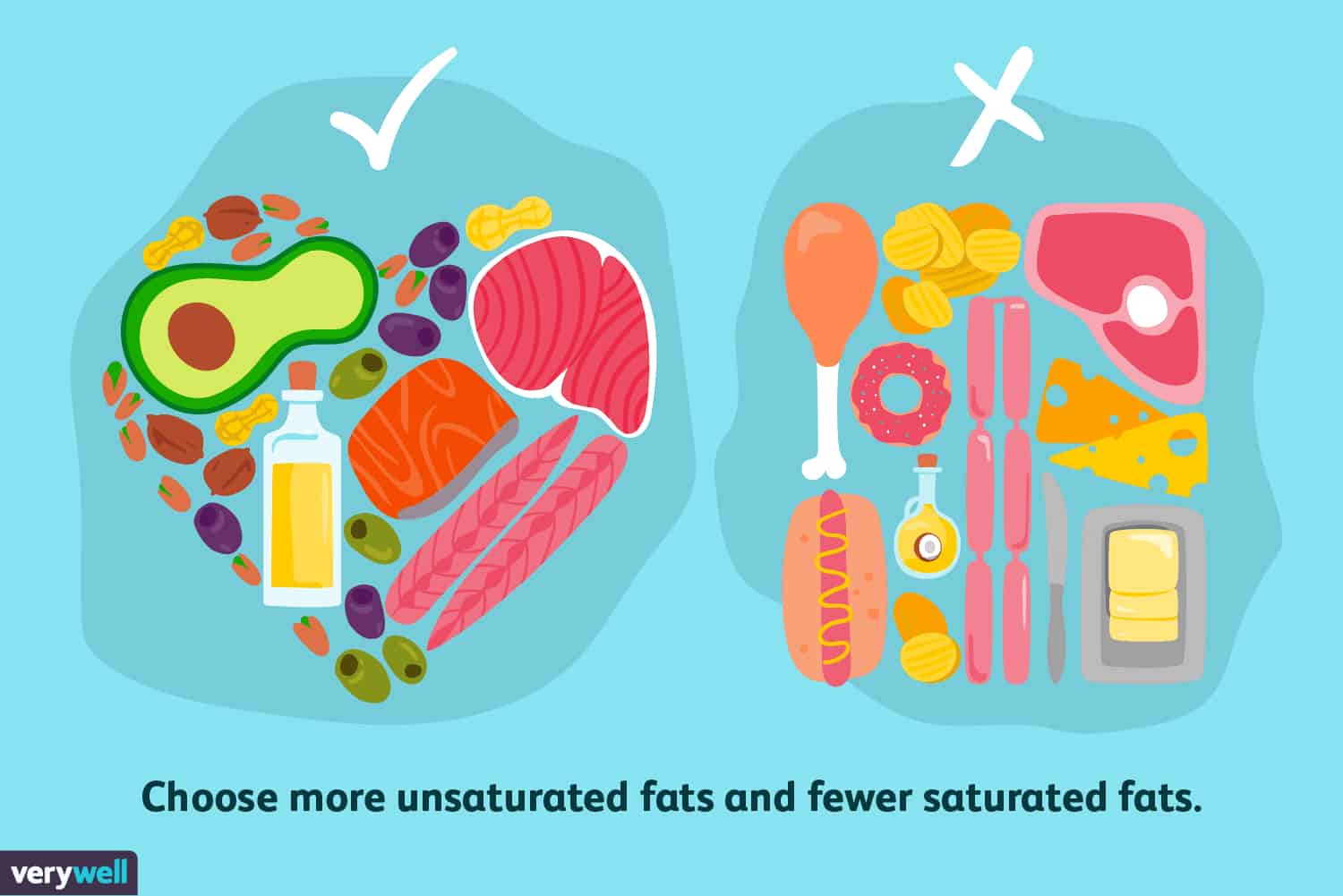In today’s world of fad diets and conflicting health advice, it’s easy to feel overwhelmed. Everywhere you turn, there’s a new “superfood” or a dietary villain to avoid. One minute, fats are the enemy; the next, they’re the cornerstone of a healthy diet. Amidst this chaos, there’s a term that keeps popping up: SFA.
What is SFA in Nutrition? Saturated Fatty Acids (SFA) exist in various foods as types of fats. They earn recognition for their solid state at room temperature and have sparked debates about their impact on health.
But what is it? Why is there so much buzz around it? And most importantly, how does it impact your health? Let’s dive deep, cut through the noise, and uncover the truth about SFA in nutrition.
See Also: What is Basic Nutrition? A Comprehensive Introduction
Contents
Understanding Saturated Fatty Acids (SFAs)
Have you ever stumbled upon a nutrition label and wondered about the term “saturated fats”? Let’s define saturated fatty acids!
Definition of Saturated Fatty Acid:
What is saturated fatty acid? Saturated Fatty Acids, commonly known as SFAs, are fats with no double bonds between their carbon atoms. Each carbon atom is fully “saturated” with hydrogen atoms. This structure is what gives them their solid form at room temperature. Think of butter on a cold morning – it’s hard because it’s rich in SFAs.
The Role of SFAs in the Body: Our bodies are like intricate machines, and SFAs play several pivotal roles in keeping them running smoothly:
- Energy Storage: SFAs act as a reserve tank of energy. When our body needs a quick energy boost, it taps into these reserves.
- Metabolism: They are crucial players in our metabolic processes, helping to break down food into energy.
- Body Temperature Regulation: Just as insulation keeps a house warm, SFAs insulate our bodies, helping maintain a stable body temperature.
- Protecting Vital Organs: Imagine SFAs as nature’s cushioning system. They envelop our vital organs, providing a protective layer against physical shocks.
In essence, while SFAs often get a bad rap in popular media, they’re indispensable to our body’s daily operations. However, as with everything, balance is key. Too much of anything, even something as essential as SFAs, can tip the scales towards health issues.
See Also: What is a CDN in Nutrition? An In-Depth Explanation
Sources of Saturated Fats
Navigating the maze of dietary advice, one often encounters the term “saturated fats.” But where do we find them in our daily meals? Let’s embark on a culinary journey to discover the primary sources of these fats.
Common Foods Rich in SFAs:
- Meat: From juicy steaks to crispy bacon, many cuts of meat are abundant in saturated fats. It’s not just the marbled red meats; even poultry with skin can be a significant source.
- Dairy Products: Love that creamy texture of whole milk, cheese, or yogurt? That’s the SFAs at work! They’re responsible for the rich taste and texture we adore in many dairy delights.
- Coconut Oil: A favorite in many kitchens and beauty routines, coconut oil is almost 90% saturated fat. It’s a staple in tropical diets and has gained popularity worldwide. This is a prime saturated fatty acid example.
- Palm Oil: Often found in processed foods, snacks, and even some baked goods, palm oil is another significant source of SFAs.
Medium-Chain Triglycerides (MCTs):
A Special Mention Now, here’s a twist in the saturated fat tale. MCTs, or medium-chain triglycerides, are a type of saturated fat, but they’re not your typical SFAs. Found primarily in coconut oil and palm kernel oil, MCTs have a shorter chain length. Why does this matter? Well, our bodies metabolize MCTs differently, leading to potential health benefits:
- Quick Energy Source: MCTs are rapidly absorbed and converted into energy, making them a favorite among athletes and fitness enthusiasts.
- Supports Weight Management: Some studies suggest that MCTs can help burn calories more efficiently, aiding in weight management.
- Brain Health: There’s emerging research on MCTs as a potential fuel source for the brain, especially in conditions like Alzheimer’s.
In conclusion, while saturated fats are often painted with a broad brush, it’s essential to understand their sources and nuances. Knowledge empowers us to make informed dietary choices, harnessing the benefits while sidestepping potential pitfalls.
See Also: What Are the 7 Elements of Nutrition? A Complete Overview
Health Implications of Saturated Fats
Dive into any health discussion, and you’ll likely find saturated fats at the center of a heated debate. Are they friends, foes, or somewhere in between? Let’s unravel the mystery.
The Great Debate:
SFAs and Heart Disease For decades, saturated fats were the villains of the nutrition world. The narrative was straightforward: SFAs raise cholesterol, leading to blocked arteries and heart disease. But, as with many health topics, the waters are murkier than they first appear. Recent research challenges this traditional view, suggesting that not all saturated fats are created equal. Some studies even hint that certain SFAs might not be as harmful as once believed. However, the consensus remains elusive, with experts on both sides of the divide.
Potential Risks and Benefits of Consuming SFAs:
- Risks: Excessive intake of SFAs has been linked to increased risk of heart disease, stroke, and certain types of cancer. They can also elevate LDL (bad) cholesterol levels, a known risk factor for heart ailments.
- Benefits: On the flip side, SFAs play vital roles in our body, from energy storage to hormone production. They also aid in absorbing essential vitamins like A, D, E, and K. Moreover, as mentioned earlier, certain saturated fats like MCTs offer unique health benefits.
SFAs and Cholesterol:
A Complex Relationship Cholesterol, a waxy substance in our blood, often gets a bad rap. But it’s crucial for building cell membranes, producing hormones, and more. The relationship between SFAs and cholesterol is intricate:
- LDL Cholesterol: Often dubbed the “bad” cholesterol, high LDL levels can lead to plaque buildup in arteries, increasing heart disease risk. Consuming too many SFAs can raise LDL levels.
- HDL Cholesterol: Termed the “good” cholesterol, HDL helps remove LDL from the bloodstream. Some SFAs can elevate HDL levels, potentially offsetting some risks associated with raised LDL.
In the ever-evolving world of nutrition science, one thing is clear: blanket statements rarely apply. While it’s wise to approach saturated fats with a discerning eye, it’s equally important to recognize their nuanced role in our health, as with most things in life, balance and moderation are key.
See Also: Sinful Nutrition: Where Every Veggie Has a Dark Side
Saturated Fats vs. Unsaturated Fats
In the grand theater of dietary fats, two main actors often take center stage: saturated and unsaturated fats. But what sets them apart? And why does this distinction matter for our health? Let’s dive in.
Differences Between Saturated and Unsaturated Fats:
At a molecular level, the difference concerns the bonds between carbon atoms. Saturated fats have no double bonds, meaning they’re “saturated” with hydrogen atoms. This structure makes them solid at room temperature—think butter or lard. On the other hand, unsaturated fats have one (monounsaturated) or more (polyunsaturated) double bonds, giving them a liquid consistency, like olive or sunflower oil.
The Health Benefits of Unsaturated Fats: Unsaturated fats are often hailed as the “good” fats, and for a good reason:
- Heart Health: They help lower bad LDL cholesterol levels, reducing the risk of heart disease.
- Anti-inflammatory Properties: Omega-3 fatty acids, a type of polyunsaturated fat, can reduce inflammation, potentially ward off chronic diseases.
- Brain and Nerve Function: Unsaturated fats affect brain health and nerve signaling.
Swapping Saturated for Unsaturated Fats: For a heart-healthy diet, consider these swaps:
- Opt for olive or canola oil instead of butter for cooking.
- Choose fatty fish like salmon over red meat.
- Snack on nuts and seeds rather than cheese or processed snacks.
- Embrace avocados—they’re a delicious source of monounsaturated fats!
In conclusion, while saturated fats have their place in our diet, embracing unsaturated fats can offer a plethora of health benefits. It’s not about demonizing and glorifying one another, but understanding their roles and making informed choices.
The Controversy Surrounding Saturated Fats
The realm of nutrition is no stranger to controversies, and saturated fats have long been at the epicenter of many heated debates. But why? Let’s delve into the shifting sands of scientific perspectives on SFAs.
Challenging the Traditional View on SFAs:
For years, the script read like this: saturated fats = bad. They were the culprits behind high cholesterol and heart disease. But recent research has thrown a wrench in this narrative. Some studies now suggest that not all SFAs are inherently harmful. In fact, certain sources of saturated fats might not significantly impact heart disease risk. This revelation has turned many previously held beliefs on their head, leading to a reevaluation of dietary guidelines.
The Evolving Perspective in the Nutrition Community:
The nutrition world is buzzing with discussions on SFAs. Many experts now advocate for a more nuanced approach, emphasizing the source of saturated fats rather than their total intake. For instance, while processed meats might still be on the caution list, coconut oil, and dairy are viewed in a more favorable light by some. The key takeaway? Nutrition is complex, and as we gather more data, our understanding evolves.
In a nutshell, the story of saturated fats is far from over. As science progresses, we must remain open-minded ready to adapt our beliefs in light of new evidence.
See Also: How To Start a Nutrition Tea Business: A Step-By-Step Guide
Practical Tips for a Balanced Fat Intake
Navigating the world of fats can feel like walking a tightrope. Too little, and you miss out on essential nutrients; too much and health risks loom. So, how do we strike the right balance?
Recommendations for Consuming Fats in Moderation:
- Mindful Portions: It’s not just about the type of fat but also the quantity. Use measuring spoons or a kitchen scale to keep track.
- Read Labels: Processed foods can be sneaky sources of unhealthy fats. Always check nutrition labels for trans fats and high saturated fat content.
Strategies to Replace Harmful Fats with Healthier Alternatives:
- Cooking Oils: Swap butter or lard with olive, avocado, or canola oil.
- Snacking: Ditch the chips for nuts or seeds. They’re packed with beneficial unsaturated fats.
- Meat Choices: Opt for lean cuts and increase your intake of fatty fish like salmon or mackerel.
FAQs
What are Saturated Fatty Acids (SFA)?
SFA is the primary type of fat in most diets. They significantly impact blood cholesterol, increasing total cholesterol (TC) and LDL-cholesterol levels. It's beneficial for heart health to replace saturated fats with unsaturated fats.
How does SFA affect cholesterol levels?
SFA strongly influences blood cholesterol, raising both TC and LDL cholesterol levels. Replacing just 5% of dietary energy from SFA with unsaturated fats can lead to a 7% reduction in LDL-cholesterol.
What are the sources of SFA?
Sources of SFA include fatty meat dairy products like full-fat milk, hard cheese, butter, and cream. Other sources include tropical oils such as coconut and palm oil, fully hydrogenated vegetable oils, egg yolk, and foods with 'hidden fat' like confectionery, cakes, and crisps.
What are Trans Fatty Acids (TFA)?
TFA raises LDL cholesterol and lowers HDL cholesterol, significantly increasing the risk of coronary heart disease (CHD). They should be avoided to lower LDL-cholesterol and reduce CHD risk.
What is the impact of dietary cholesterol on blood cholesterol?
Dietary cholesterol can elevate blood cholesterol levels. However, its impact is weaker compared to SFA and TFA. High dietary cholesterol intake might affect blood lipid levels in individuals at risk of CVD. When guidelines to reduce SFA intake are followed, it usually also leads to decreased dietary cholesterol intake.
Conclusion
Our journey through the intricate world of fats has been enlightening. We’ve debunked myths, tackled controversies, and armed ourselves with knowledge. Understanding SFAs in nutrition is more than just a scientific endeavor—it’s a pathway to healthier living. As we stand at this crossroads, let’s pledge to make informed, balanced dietary choices. After all, our health is the sum of our choices, and every mindful decision takes us a step closer to well-being.
See Also: How to Make Nutrition Drinks at Home: Simple Recipes

Dr. Karen Gill is an ABMS board certified pediatrician whose expertise includes breastfeeding, nutrition, obesity prevention, and childhood sleep and behavior issues. She currently lives and practices in Portland, Oregon, where she also volunteers for CASA for Children and the Red Cross.









